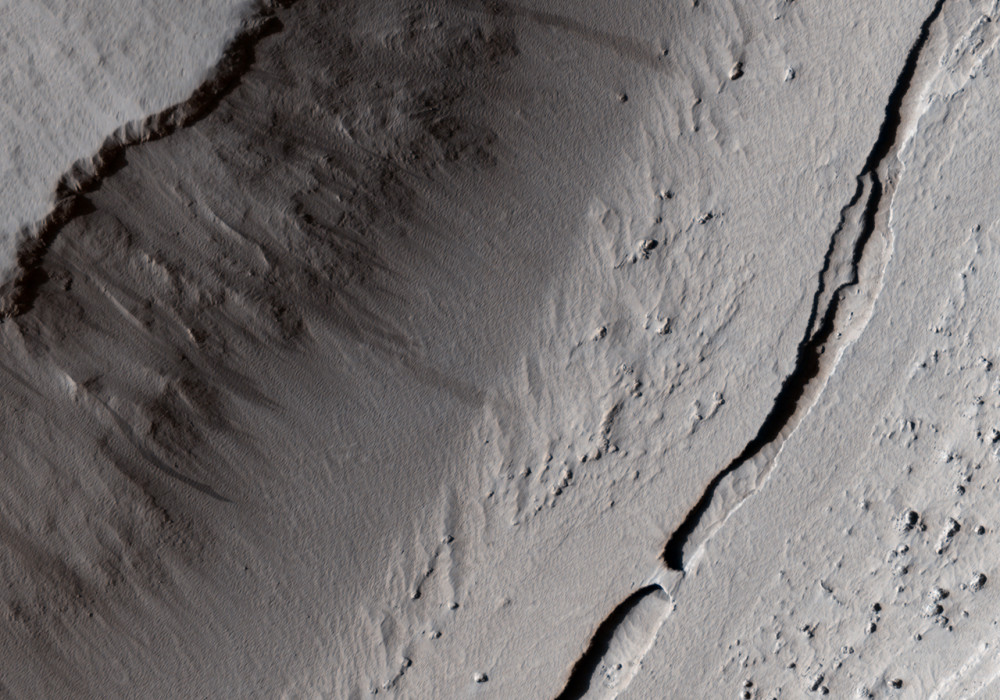This observation shows a thin channel between knobs in the Northern hemisphere. These knobs are part of a local group of knobs called the Tartarus Colles.
Both knobs visible in this image have dark slope streaks. It was originally thought that slope streaks might be locations of surface water wetting and darkening soil, but it is now commonly believed that slope streaks are mini-avalanches of dust. Slope streaks fade over time as wind erosion blends them in with their surroundings.
The channel between the knobs has a variable depth as seen by the varying shadow lengths. The origin of the channel is unknown, but it is probably not a fluvial channel because there are no obvious source or deposit regions. The channel is probably a collapse feature.
One portion of it, ( see subimage ) contains a bridge, and is probably a remnant of the original surface. A depression that extends from the channel northwards—but which is not as deep as the majority of the channel—might be in the process of collapsing and enlarging the channel.
Written by: Kelly Kolb (17 November 2010)
More info and image formats at http://hirise.lpl.arizona.edu/PSP_001420_2045
Image: NASA/JPL/University of Arizona
